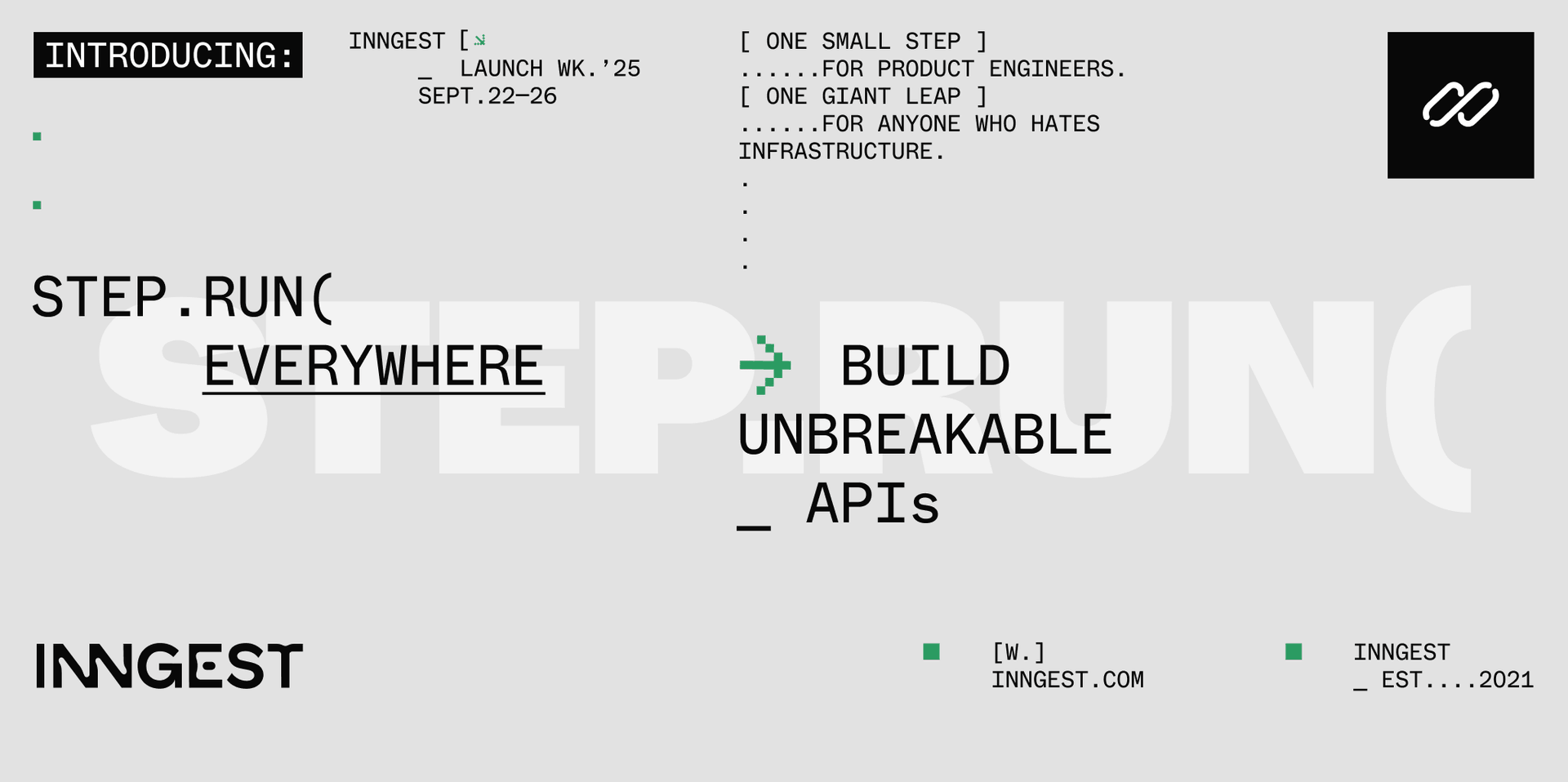
Introducing Step.Run Everywhere: Build Unbreakable APIs
Tony Holdstock-Brown· 9/22/2025 · 4 min read
TLDR: We're bringing one-step durability to APIs. Add a single line of code to any REST API to immediately add durability, automatic retries, and observability to your applications, without ever having to think about queues, workers, or extra infra.
APIs are doing a lot more than they used to. Kicking off AI models, stitching together third-party services, running background jobs… if you're building in 2025, you know durability at the endpoint level is a non-negotiable.
The question isn't why—it's how.
Historically, we've only had a couple (painful) options for making an API reliable:
- Push work to a queue: Wire up SQS/Kafka, publish messages, write a consumer, and wait for workers to process jobs. Congrats, now you have two code paths—the API route and the job handler—to maintain, deploy, and debug.
- Roll your own background system: Have your backend engineer build a transactional outbox architecture, write cron pollers, manually add retry logic, and hope you don't miss an edge case that double-processes or drops data. The downsides here are self-explanatory.
While adding durability to background jobs got a bit easier (or significantly so if you're using Inngest 😉) in recent years, adding durability to APIs still required users to manage duplicate business logic for APIs and jobs.
Until now.
You saw this coming, didn't you?
Step.Run: The fastest path to durable APIs
Today's APIs need the same thing backend jobs have now enjoyed for years: easy to roll durability designed to expect iteration, not just withstand it. They need:
- Durability: Survive crashes, deploys, and cold starts.
- Automatic retries: Handle flakiness without double-processing nightmares.
- Observability: A single place to see every request, input, output, and error—so you can fix issues and iterate fast.
- Abstraction: A way to get all of this without learning infra, wiring queues, or splitting code into "API" vs. "background."
Today, we're bringing all of this to APIs, with step.run(everywhere).
One line of setup. No queues. No workers. No separate system to babysit.
Simply wrap logic inside step.run() for instant durability, automatic retries, and superpowered observability, without touching infrastructure.
import { createFunction, step } from "inngest/express";
app.post("/api/process", createFunction(async (req, res) => {
const summary = await step.run("summarize document", async () => {
return await ai.summarize(req.body.text);
});
await step.run("index summary", async () => {
await search.index(summary);
});
res.json({ ok: true, summary })
}));
Crash the server halfway through — we'll resume from the last completed step.
Need to retry a flaky model call — we'll handle it with backoff.
Want to know what happened — open the dashboard and replay the entire request.
One code path to manage
Instead of building and maintaining two systems, you now have one code path—your API route—that is automatically durable, retryable, and fully observable.
- For AI endpoints: keep long-running, multi-step calls from timing out.
- For flaky external services: add automatic retries without duct-taping loops together.
- For debugging: get a full trace of every request, input, and output without leaving the dashboard.
It's like giving your API superpowers, without teaching your team to be distributed systems engineers.
Get Started
Today, step.run (everywhere) is in developer preview on Go. TypeScript support will enter closed beta next month, with a developer preview soon after.
- Read the docs and wrap your first API call with
step.run(). - Watch runs appear in the dashboard in real time.
- Crash your server for fun and watch the request still finish.
Once you've seen it work, you won't want to ship another endpoint without it.